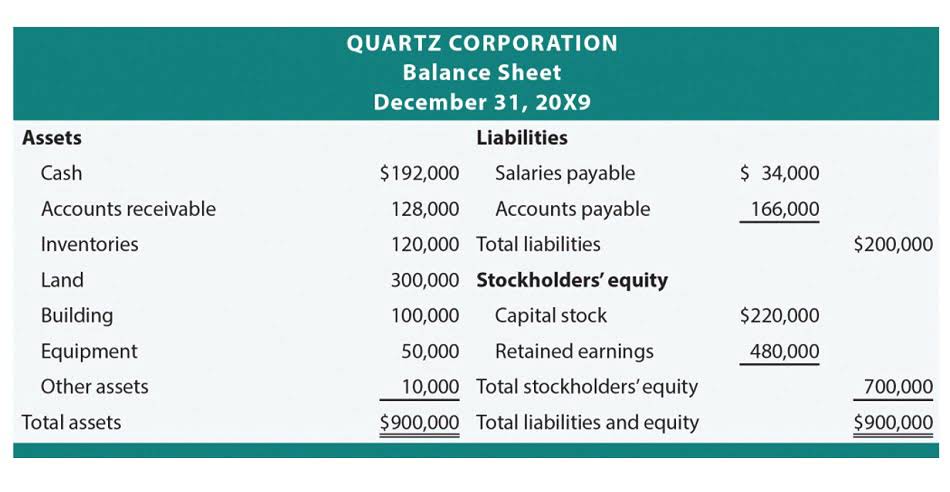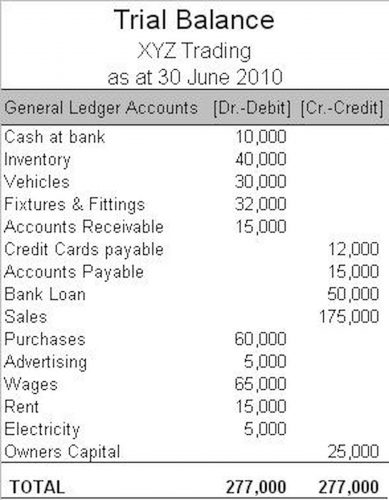
For each of the adjustments shown on the Balance per BOOKS side of the bank reconciliation, a journal entry is required. Each journal entry will affect at least two accounts, one of which is the company’s general ledger Cash account. Company A paid $3,750 worth of checks into its bank account and debited its cash book accordingly, but the bank has not yet credited the funds to the depositor’s account. As of 30 September 20XX, the ending debit cash balance in the accounting records of Company A was $1,500, whereas its bank account showed an overdraft of $500. Maintaining accurate financial records makes it easier to organize your taxes when it comes time to file. Regular bank reconciliation saves you from having to review a full year of financial records—instead, you can quickly consult your reconciliation statements to review any required information.
- When preparing a bank reconciliation statement, a journal entry is prepared to account for fees deducted.
- Once you have identified all the differences between the two statements, identify the source of the discrepancy.
- The starting point is crucial for identifying any discrepancies that may have arisen since the last reconciliation.
- After making adjustments, the adjusted ending balance in your company’s records should now match the ending balance on the bank statement.
- A bank reconciliation statement should be completed monthly but can even be done weekly if your company processes a large number of transactions.
Step 1 of 3
- If the two balances differ, you’ll need to look through everything to find any discrepancies.
- Ultimately, bank reconciliation is a relatively straightforward accounting process that is essential for understanding a company’s cash position.
- If the bank has added legitimate entries, you need to make adjustments in your books so the two reflect the same transactions.
- Company A paid $3,750 worth of checks into its bank account and debited its cash book accordingly, but the bank has not yet credited the funds to the depositor’s account.
- Additionally, COUNTIF adds the number of times values exist in any given range.
- To help you master this topic and earn your certificate, you will also receive lifetime access to our premium bank reconciliation materials.
- Mistakes made during the recording of financial transactions, such as incorrect amounts or misclassified entries, can lead to discrepancies between the company’s records and the bank statement.
As for outstanding checks, you’ve recorded them in the books, but they haven’t cleared in the bank account. You https://www.bookstime.com/articles/scalefactor need to deduct the check amounts from your bank balance to decrease it so that it reflects the balance of your cash book. After reviewing all deposits and withdrawals, adjusting the cash balance and accounting for interest and fees, your ledger’s ending balance should match the bank statement balance.
Effect of Time Intervals On Bank Reconciliation Statements
- Additionally, bank reconciliation statements brings into focus errors and irregularities while dealing with the cash.
- Note that transactions may take a few days to clear, so the transaction date in your financial records may not precisely match the date on your bank statement.
- The complexities involved in bank reconciliations arise from the dynamic nature of financial transactions, diverse payment methods, and the potential for human error.
- Having updated your records, the next crucial step is to reconcile the ending balances between your bank statement and your accounting records.
- The reconciliation process also helps you identify fraud and other unauthorized cash transactions.
- Reconciling bank statements with cash book balances helps your business know the underlying causes of these balance differences.
To adjust for uncleared checks during bank reconciliation, list all issued but uncleared checks, subtracting their total from your bank statement balance. Recall that the adjustments to the balance per BOOKS will require accounting entries for the items to be posted to the company’s general ledger accounts. Error in a payment to a creditor, which was correctly processed by a bank as $2,435 but recorded in the cash book as $2,345. Some transactions first appear in a bank statement before they are entered into the cash book simply because the business is unaware of their existence until it receives the bank statement.
Bank Fees
More frequent reconciliations, weekly or daily, increase efficiency as there are fewer transactions to process at any one time and issues are detected sooner. Errors in calculation or recording of payments are more likely made by business staff than by a bank. NSF (Not Sufficient Funds) checks that have been dishonored by a bank due to insufficient funds in the issuer’s bank account. After including all the amounts identified in Step 3, your statements should display the same final balance. If any discrepancies cannot be identified and reconciled, it may signal an error or risk of fraud which your company bank reconciliation can investigate further. To do this, businesses need to take into account bank charges, NSF checks, and errors in accounting.

Banks often record other decreases or increases to accounts and notify the depositor by mailed notices. At times, you might give standing instructions to your bank to make payments regularly on specific days to third parties, such as insurance premiums, telephone bills, rent, sales taxes, etc. Matching the payment to an invoice can be challenging if the payments are ongoing, so it’s important to reference payments to an invoice number so you can easily identify a double payment. Due to the overwhelming paperwork that the financial department deals with, it’s possible that some invoices get misplaced or are never recorded. In the case of Feeter, the first entry will record the collection of the note, as well as the interest collected. Eliminate common reconciliation errors with templates designed by finance professionals for finance professionals.

Step 2 of 3

These time delays are responsible for the differences that arise in your cash book balance and your passbook balance. Bank reconciliation statements ensure that payments were processed and cash collections were deposited into the bank. Bank reconciliation statements are often used What is bookkeeping to catch simple errors, duplications, and accidental discrepancies.

Reconcile Balances
Debits and credits are reversed in bank statements–compared to business accounting records–because the bank is showing the transactions from its perspective. Human error in the data entry process can sometimes lead to incorrect amounts or miscalculations on a business’s financial statements. While it cannot entirely erase the potential for data processing errors, using accounting software can reduce the likelihood of errors to help generate more accurate financial statements. By comparing the two statements, Greg sees that there are $11,500 in checks for four orders of lawnmowers purchased near the end of the month.
